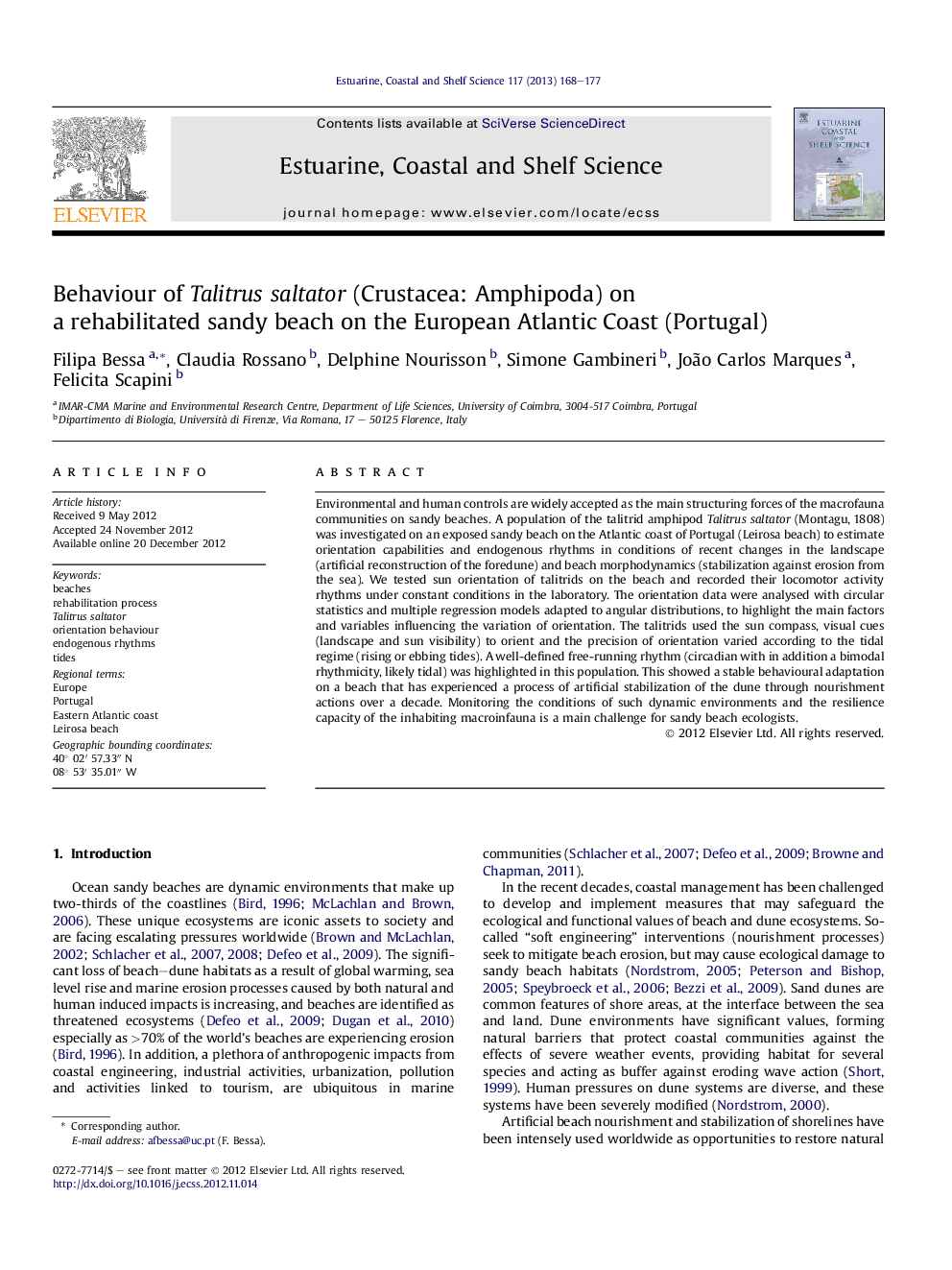| Article ID | Journal | Published Year | Pages | File Type |
|---|---|---|---|---|
| 4540092 | Estuarine, Coastal and Shelf Science | 2013 | 10 Pages |
Environmental and human controls are widely accepted as the main structuring forces of the macrofauna communities on sandy beaches. A population of the talitrid amphipod Talitrus saltator (Montagu, 1808) was investigated on an exposed sandy beach on the Atlantic coast of Portugal (Leirosa beach) to estimate orientation capabilities and endogenous rhythms in conditions of recent changes in the landscape (artificial reconstruction of the foredune) and beach morphodynamics (stabilization against erosion from the sea). We tested sun orientation of talitrids on the beach and recorded their locomotor activity rhythms under constant conditions in the laboratory. The orientation data were analysed with circular statistics and multiple regression models adapted to angular distributions, to highlight the main factors and variables influencing the variation of orientation. The talitrids used the sun compass, visual cues (landscape and sun visibility) to orient and the precision of orientation varied according to the tidal regime (rising or ebbing tides). A well-defined free-running rhythm (circadian with in addition a bimodal rhythmicity, likely tidal) was highlighted in this population. This showed a stable behavioural adaptation on a beach that has experienced a process of artificial stabilization of the dune through nourishment actions over a decade. Monitoring the conditions of such dynamic environments and the resilience capacity of the inhabiting macroinfauna is a main challenge for sandy beach ecologists.
